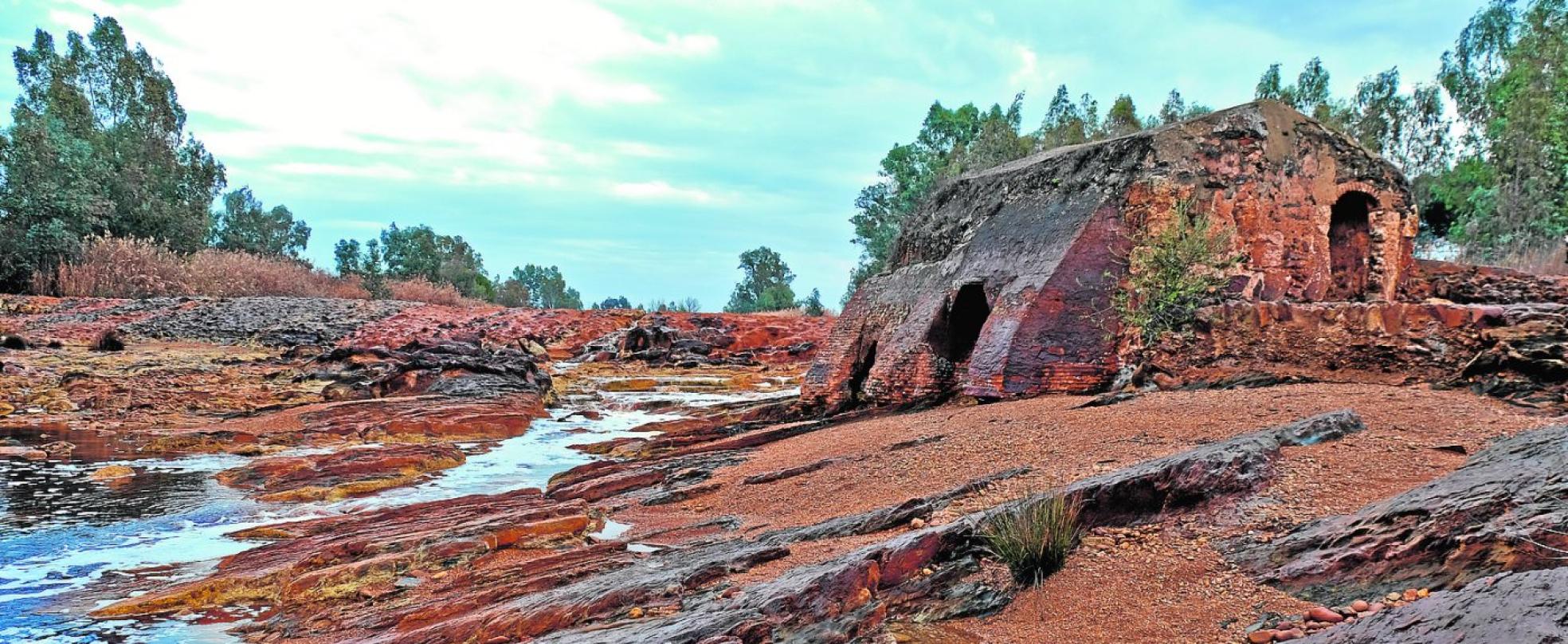Mars or mines? In parts of Huelva it can be hard to tell
A walking route for those who love nature and are interested in space leads along the Río Tinto and a visit to see some ancient flour mills
PEDRO GRIFOL
Friday, 28 October 2022, 11:06
For thousands of years the Río Tinto has left a peculiar array of colours behind it as it has made its way through Huelva province. The water, with its high content of ferrous salts, has created landscapes and enclaves which are unique in the world because of their colourful beauty and are well worth a visit.
A leisurely walk through these areas is an interesting experience and one which takes visitors to places which have remained well off the usual tourist routes.
For several centuries, Huelva's wealth of cereal crops led to the construction of flour mills along the banks of the Río Tinto, taking advantage of the flowing river to grind flour. Although most of the mills date back to the Middle Ages, some are still standing from the Roman era. The majority of these ancient mills are found in the north-east of Huelva province.
The walking route, which is called Los Molinos, starts in the town of Villarrasa and runs alongside the Río Tinto, crossing the Condado de Huelva. The route begins at the Puente Gádea bridge on the A-493 highway at approximately kilometre 9.5. There is ample room to park in an area beside the river.
The first mill we come to is called the Molino de San Juan. Here, we turn and head downstream. The next one is the Molino Gádea, situated by the bridge of the same name, and it is quite well preserved as it still has its three stones and the dam across the river.
After this we pass under the Gádea bridge to see the Molino de la Vega, which is the largest of all the mills, then we make a diversion to follow the old railway line and that will lead us to the Molino de Juan Muñoz, the Centeno and La Vadera, which is where this route comes to an end.
Although part of the route is not very well signposted, it is an enjoyable walk along a rural track, if equipped with a stick, boots and backpack. The historical mills are particularly striking because the stone with which they were constructed had been tinged with colour from the river water, turning it shades of yellow, orange and red.
The Riotinto Mines first began to be exploited about 5,000 years ago, in the Bronze Age. Silver, copper and iron were extracted from them, and throughout the centuries they were worked by Tartessians, Phoenicians, Cartaginians and Romans and so on, until the arrival of the British.
When the British owned and ran the mines (between 1873 and 1954), they built the railway which is now a tourist train and introduces us to the history of the Riotinto Mining Park. .
When the mines returned to Spanish hands, the American space agency NASA and the Spanish Astrobiology Centre joined forces to explore the subsoil of the mining basin to see if there were similarities between the mountains of slag, stained by the colourful amalgam of rusty colours, in Huelva and the surface of Mars.
It appears that this contaminated debris has enabled living beings to develop which do not depend on solar energy to survive, a habitat which is expected to resemble that of the planet Mars.
We complete this trip with a visit to the spectacular sites where the minerals were extracted in the open air, such as the Peña de Hierro mine and at Corta Atalaya, an immense crater with a diameter of 1,200 metres and a depth of 350 metres.
Here, the crater's range of rusty colours contrasts with the irridescent shades of green from the sulphurous waters of what is known as the 'infernal well', and if you peer in it can result in a feeling of vertigo that makes you think twice about getting any closer.
Further information about these and other attractions in the area can be found from www.turismohuelva.org and www.parquemineroderiotinto.com



